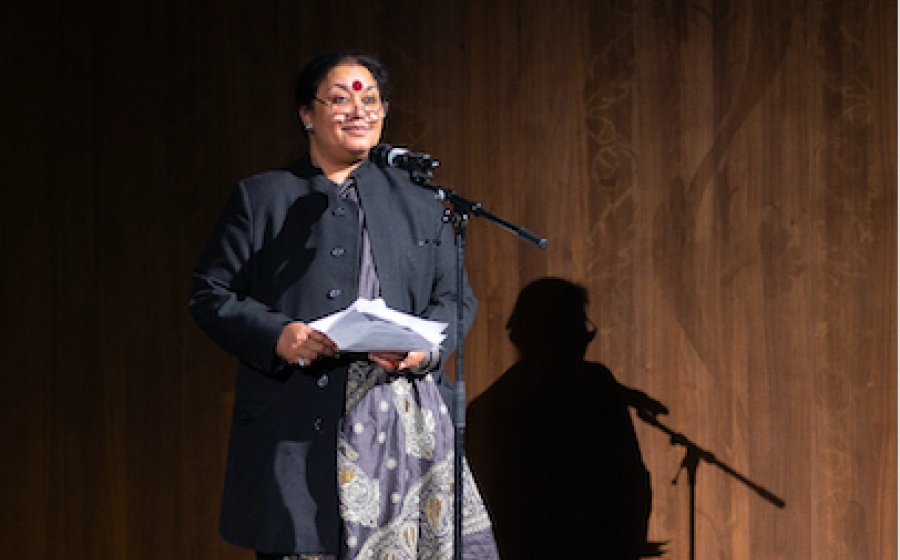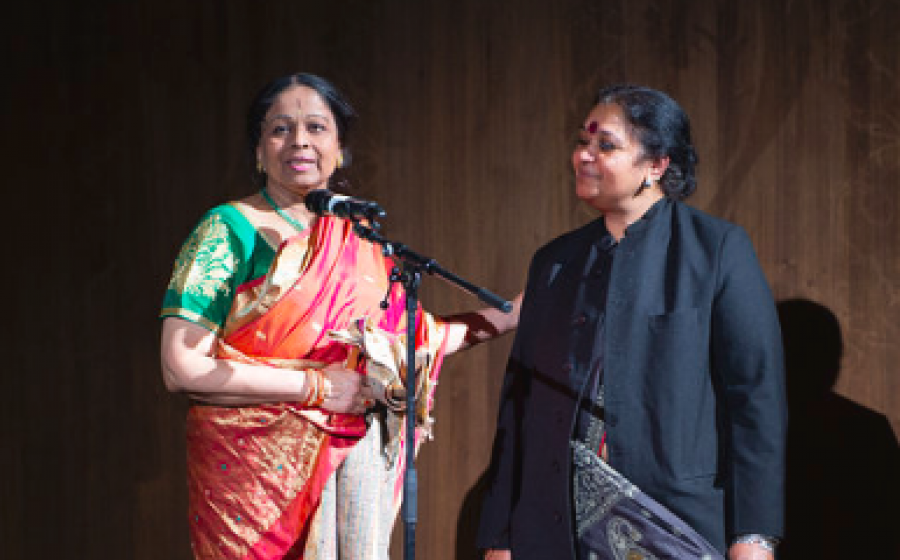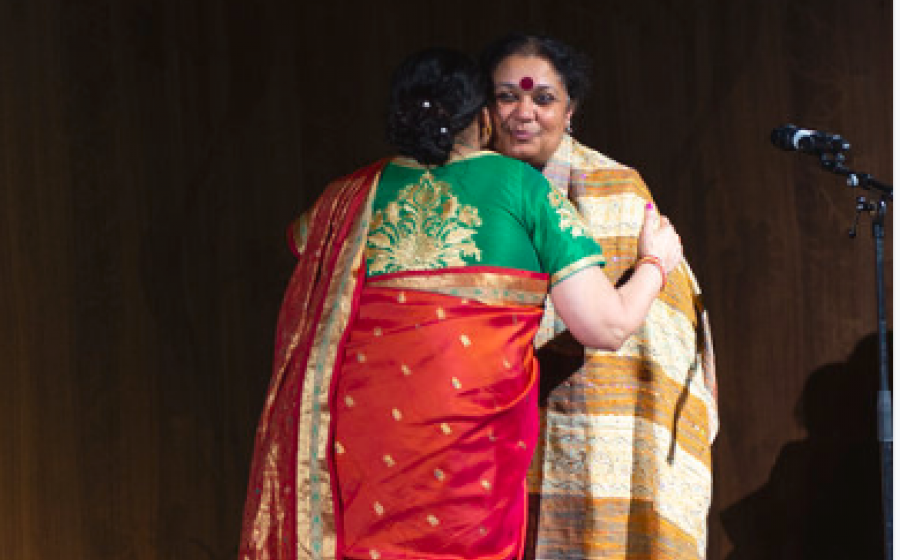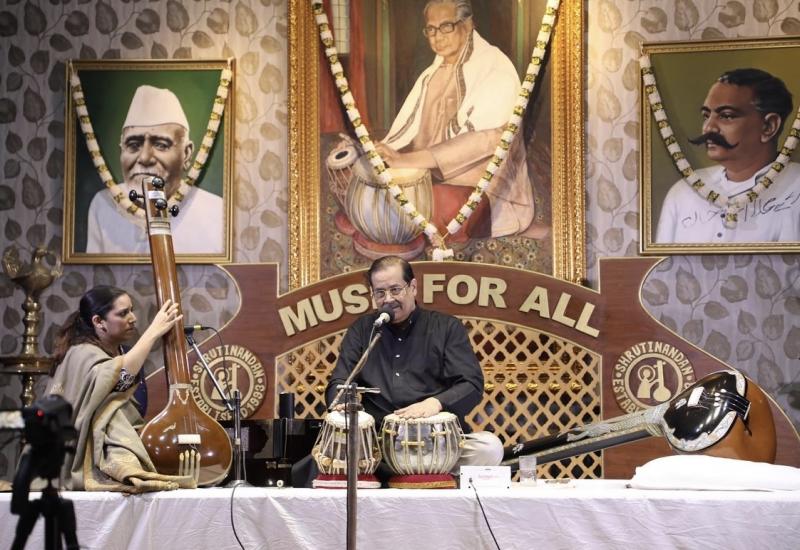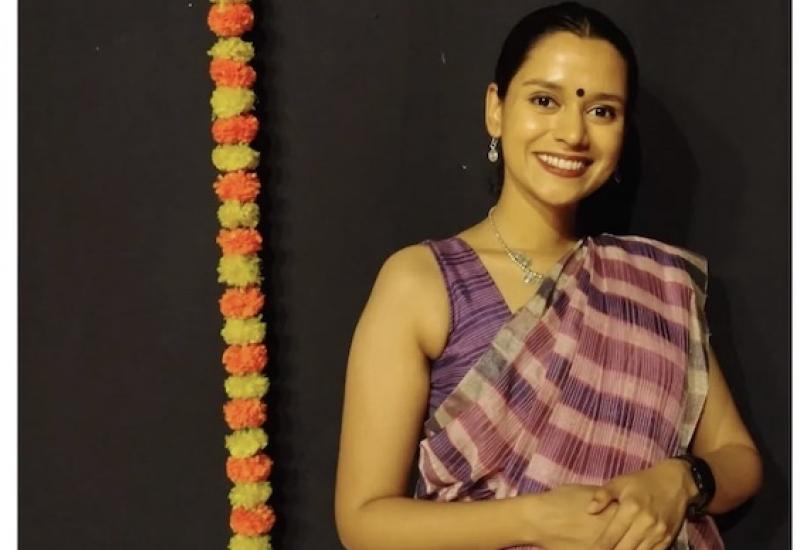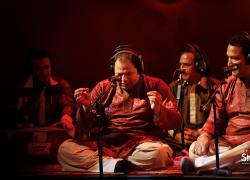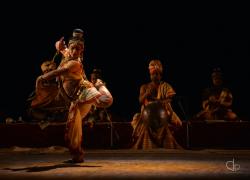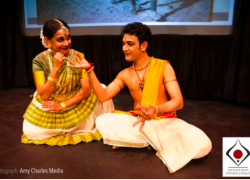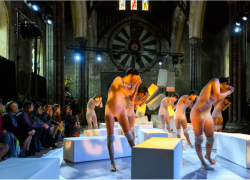Ruminations
Ruminations held on 15 October 2019, was a look back by Akademi, South Asian Dance in the U.K., at its forty years of existence – 1979 to 2019. The beautiful and intimate setting of the Victoria and Albert museum’s Lydia and Manfred Gorvy theatre was an apt space for this retrospective, which celebrated the achievements of the past while looking to next steps for the future
In a format familiar to those who have been involved with Akademi over the years, the evening combined spoken reflections with performance pertinent to these reflections. Particularly significant was the presence of dancer, teacher, choreographer and general all-round dynamo, Tara Rajkumar, who first established Akademi (then Academy of Indian dance) in 1979 and had travelled from Australia to be present. She shared some of the thinking behind the founding of Akademi forty years ago. In a month that has found South Asian dance aficionados in the UK so spoilt for choice for events to attend that they have felt overwhelmed and inadequate in their inability to be in three places at once (a Time Turner anyone?), it took an effort of the imagination to recognise Rajkumar’s depiction of Britain in the late 70s. It was, she observed, ‘Very barren when it came to South Asian dance…there was nothing apart from what was organised by Birendra Shankar.[1] And those performers came and went back. They left nothing behind. So, I thought…what about the diaspora?’. This thought germinated into the creation of Akademi - which has always been about the place of South Asian dance forms on the British landscape, not as visitors, but as an integral part of the warp and weft of the tapestry that constitutes ‘British culture’.
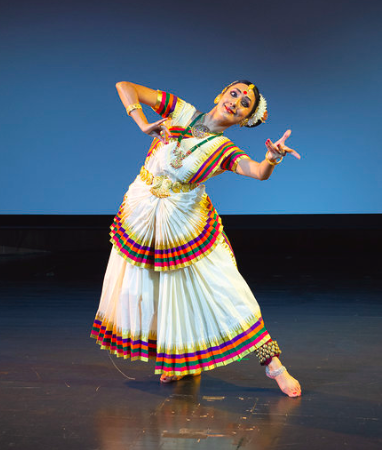
True to this aim, following Rajkumar’s departure for Australia, first Bharti Kansara with John Chapman, then Pushkala Gopal with Naseem Khan, continued to lead Akademi to ‘promote Indian classical dance forms through teaching and stage production’, producing The Adventures of Mowgli and The Return of Spring, the first classical Indian danced based productions to tour Britain with artists living and working in the U.K.. The performers in these first productions, including Pushkala Gopal, Shobana Jeyasingh, Pratap Pawar, Piali Ray, Chitralekha Bolar and, of course, a young Akram Khan have gone on to transform the face of South Asian dance in Britain in a multitude of ways. Given this legacy, it was only fitting that Pratap Pawar, ‘who spent 11 years of his life teaching kathak for Akademi’, was present at the event and was responsible for the first performance given by disciple, Abhirami Eswar, in an elegant classical invocation to Lord Ganesh.
Giving us a glimpse of the charm Rajkumar must have wrought as a performer in her younger years,[2] Rajkumar’s disciple, Bindu, gave the second performance of the evening. Depicting the destruction of the Khandva forest to make space for the city of Indraprastha, Bindu’s vivid evocation of the death of the animals caught in the fire had a clear resonance with the concerns of today’s Extinction Rebellion campaigners. It also coincidentally reminded us of one of Akademi’s inspirational early education projects, ‘The Women who Hugged Trees’, based on the Chipko Movement in Uttarakhand,[3] so it was gratifying that the driving force behind this project, then Akademi education officer Tina Cockitt, was amongst the audience.
Though Pushkala Gopal could not attend, she was represented both by her grandson and by her students, who performed a section of a work she had choreographed for Akademi in 2018, a bharatanatyam work set to music by the Baroque French composer Jean-Philippe Rameau. The measured stateliness of the music was well matched by the symmetry and extension of the classical vocabulary performed with graceful confidence by the dancers.
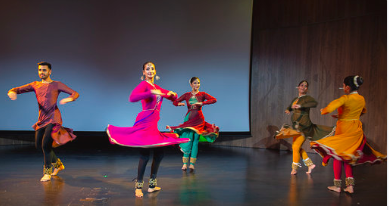
For thirty of the forty years of Akademi’s life, of course, it has been directed by Mira Kaushik, a deliberately chosen non-dancer who took over from Gopal and Khan aged only 28. In her reflections, Kaushik drew attention to different phases of Akademi’s journey under her leadership: the time as an ‘invisible lamp’, working at the grassroots offering classes and working in schools and communities; the time of outdoor productions starting memorably with Coming of Age (2000), and finally the time, since 2012, spent contending with austerity. A film montage edited by Glen Cridland brought together some of the highlights of these years – the work in schools, in hospitals and with the elderly; the competitions (Navodal), performance and choreographic platforms for young dancers (Daredevas, Navodit, Choreogata); the outdoor productions that helped reimagine so many of the iconic spaces of London and beyond (think for example of Coming of Age (2000)/Escapade(2003)/Paradiso (2018) for the Festival Hall; Sapnay and Avaaz (both 2006) for Trafalgar Square and Waterscapes (2004) for Somerset House).
The event had a particular poignancy, as Kaushik, after working with indefatigable energy, imagination and ambition for the last thirty years, steps down as Director in November, ‘handing the baton’ (Kaushik’s own words) on to joint CEOs, Artistic Director Dancer and choreographer Subathra Subramaniam and Executive Director Kirsten Burrows. This poignancy was reflected in the last piece, performed by Urja Desai Thakore’s Company Pagrav, and featuring Mira’s daughter Kavya Kaushik for whom Akademi became part of the family when she was only three months old. Burrows, who has spent the past 6 months working at Akademi took the opportunity to acknowledge all the hard work put in behind the scenes by Akademi’s committed and talented staff. Subramaniam thanked Mira for ‘making Akademi the beating heart of South Asian dance in Britain’, while sketching out her own dreams and ambitions for ‘artists with clear career paths’, with clear ‘work opportunities’, and ultimately ‘for our own building where South Asian British dancers can come, be, make and be nurtured.’
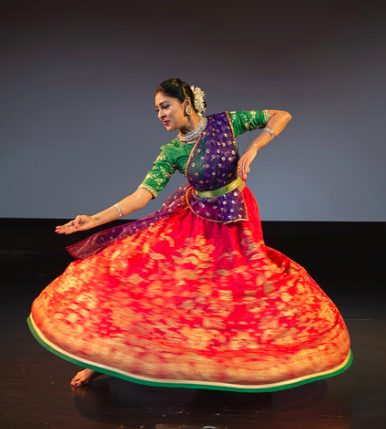
With the introduction of the classical Indian dance faculty for the ISTD, the (sadly short lived) BA in South Asian and Contemporary Dance at London Contemporary Dance School; through the work, funding and opportunities given to so many young dancers especially at the outset of their careers; through the performances taken to every part of London and beyond, from primary schools in Uxbridge to the Houses of Parliament, it is hard to dispute the role Kaushik and Akademi have played in increasing both the visibility and the accessibility of South Asian dance forms and in disrupting the geographical tethering of South Asian dance forms to the Indian subcontinent, to place them firmly on the map of Britain. Rajkumar felt that her dreams had been fulfilled ‘beyond expectation’, honouring Kaushik with a shawl, while the audience gave her a standing ovation. Kaushik’s years as Director have not been without their share of controversy, but whether it be as an honest friend reminding us of our duty to practise, or as a defensive family member reminding those outside the sector how difficult it is for us to practise due to the lack of resources, her vision and energy will be much missed. Pulse takes this opportunity to thank Mira for all she has done for the sector, looking forward to seeing what avatar she will take in her next venture (as ‘Mira’ juxtaposed with ‘retirement’ makes an oxymoron). At the same time, we wish Kirsten and Suba all the very best and look forward to working with and supporting Akademi as it embarks upon its next forty years.
[1] Artistic director of the annual Sanskritik Festivals of Arts of India which took place at the South Bank Centre from 1970 to 1988.
[2] An illustration of her magnetism is contained in this anecdote related to me by former GLA Dance and Mime officer Lynn Maree: ‘When Robin Howard saw Tara dance, it was probably about 2 weeks after he had fallen in love with Martha Graham. And he once told me that if he had seen Tara before he had seen Martha Graham, he would probably have made a big push behind classical Indian dance – and not contemporary dance. And he meant it’ (Interview with the author November 2017). It is mind boggling to think of how different the course of classical Indian (and contemporary!) dance forms in Britain might have been.
[3] The Chipko Movement refers to the direct action taken by members of the Garhwal community in Uttarakhand to protect the Mandal forest from the depredations of a sporting goods company. Community members (particularly women), protected the trees by hugging them to prevent them being felled – hence Chipko, as in Hindi, ‘chipko’ means to cling. A demonstration of how the epithet ‘tree hugger’ should serve as a source of dignity and pride.

